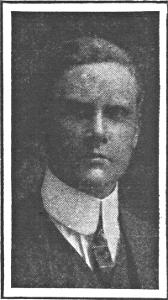
The Project Gutenberg EBook of The Mentor: Historic Spots of America, Vol. 1, Num. 32, Serial No. 32, by Robert McNutt McElroy This eBook is for the use of anyone anywhere in the United States and most other parts of the world at no cost and with almost no restrictions whatsoever. You may copy it, give it away or re-use it under the terms of the Project Gutenberg License included with this eBook or online at www.gutenberg.org. If you are not located in the United States, you'll have to check the laws of the country where you are located before using this ebook. Title: The Mentor: Historic Spots of America, Vol. 1, Num. 32, Serial No. 32 Author: Robert McNutt McElroy Release Date: September 7, 2015 [EBook #49905] Language: English Character set encoding: UTF-8 *** START OF THIS PROJECT GUTENBERG EBOOK MENTOR: HISTORIC SPOTS OF AMERICA *** Produced by Juliet Sutherland and the Online Distributed Proofreading Team at http://www.pgdp.net
The Mentor
“A Wise and Faithful Guide and Friend”
Vol. 1 No. 32
JAMESTOWN
PLYMOUTH ROCK
TICONDEROGA
INDEPENDENCE HALL
THE ALAMO
GETTYSBURG

By ROBERT McNUTT McELROY
Head of the Department of History and Politics, Princeton University
A few years before the settlement of the territory now known as the United States the people of Europe had witnessed a great naval battle in which two kinds of civilizations contended for supremacy. England and Spain were the combatants, and the issue, as we now clearly see, was whether the old idea of monarchy or the new idea of democracy should dominate two continents. Gold from Mexico and Peru had made Spain a great power. Successive royal inheritances had given to her kingly line the control of a large part of Europe. She was the champion of the Church of Rome, and regarded it as her mission to prevent all heretics from planting colonies in the New World. England, on the other hand, was the champion of Protestantism, whose doctrine of the direct responsibility of the individual led logically to democracy in government. England won the battle, destroying Spain’s great Armada, and thus opening the New World to the settlement of men professing Protestant doctrines; for as soon as Spain’s power on the seas was shattered Protestants could plant colonies without danger of having them destroyed by a Spanish man-of-war.

JAMESTOWN ISLAND
The exact site of the original settlement. Once a peninsula, this ground has been cut away from the mainland by the constant washing of the river. It is now protected by a stone wall.
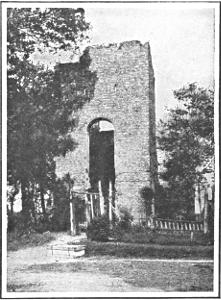
OLD CHURCH AT JAMESTOWN
A ruined tower of the earliest colonial days.
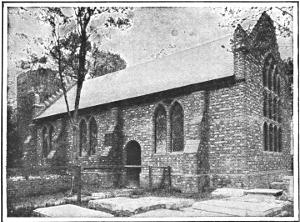
JAMESTOWN CHURCH
A reproduction of the church built 1639-1647. This building was put up for the Jamestown Exposition in 1907, using the old tower, which can be seen in the background, for its entrance.
Within a few years after the destruction of the Armada a great colonizing company was established in England for the purpose of sending out men to settle the New World. Sir Thomas Gates, Sir George Somers, and a number of associates asked King James the First of England to grant them a charter of incorporation. He consented, and on April 10, 1606, transferred to them the vast district called Virginia, which comprised practically all the territory later occupied by the thirteen American colonies. The charter which made the grant clearly declared “that all and every the Persons … which shall dwell and inhabit within every or any of the said colonies or Plantations, and every of their children, … shall have and enjoy all liberties, Franchises, and Immunities … as if they had been abiding and born within this our Realm of England.” This was a promise of self-government for all English colonies in America, and if England had carried it out in good faith there would not later have been the necessity of fighting the Revolutionary War; since all that the Americans demanded at the opening of that conflict was to be taxed only by their own representatives, a privilege which Englishmen in England had enjoyed for many generations.

JAMESTOWN MONUMENT
A shaft to commemorate the first permanent English settlement on American soil. Jamestown was founded May 13, 1607.
The Virginia Company, as this great corporation was called, was divided into two subcompanies, the London and the Plymouth Companies, to each of which was assigned the task of colonizing one-half the territory.
Before many weeks had passed George Popham attempted to plant a colony in the part assigned to the Plymouth Company, but it utterly failed.
The London Company, meanwhile, had fitted up three small vessels, the Godspeed, the Discovery, and the Susan Constant, placed one hundred and five colonists aboard, and sent them forth to plant a colony. They sailed from the Downs on New Year’s Day, 1607, and after a stormy voyage of almost four months dropped anchor off a pleasant point of land, to which in gratitude they gave the name “Point Comfort.”
As they had been warned, however, to establish this settlement far up a navigable river, out of danger from wandering vessels of the Spanish Main, they entered the beautiful river of Powhatan, which they called the James, and sailed up it for some fifty miles until they came to a wooded island, which they chose as the site of their colony. There they cut logs and built the rude huts which marked the site of Jamestown, the first permanent English settlement within the limits of what we now know as the United States of America.
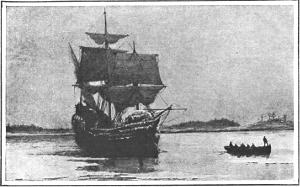
THE MAYFLOWER
The pilgrim ship is shown as it entered Plymouth Harbor bringing the first New England settlers.
Through sorrow and privations, surrounded by the nameless terrors of an unknown wilderness, harassed by savages, and disheartened by sickness, the little colony survived as by a miracle, and became the nucleus of a nation. Of the old Jamestown nothing now remains but an ancient church tower overgrown with ivy and a few crumbling tombstones. But its honor remains, secure in the hearts of a grateful people.
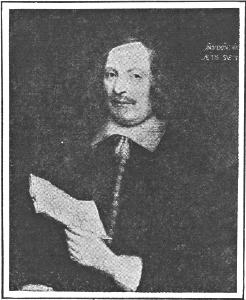
EDWARD WINSLOW
From the only portrait of a “Mayflower” pilgrim in existence. Edward Winslow was one of the governors of Plymouth colony.
The failure of the Popham colony had discouraged the Plymouth Company, and it was not until Jamestown was a flourishing village that a permanent settlement was made in the northern part of the region which King James had granted to the Virginia Company. Those years had been years of strife and sorrow in England. The king in the narrow bigotry of his ecclesiastical views, had declared that if any refused to conform to the rules of worship prescribed by the established Church of England, he would “harry them out of the land,” and King James had kept his word. Many Englishmen had been “harried out of the land,” and had taken refuge on the continent of Europe; but the band for whom history was reserving the largest place had escaped from Scrooby in Nottinghamshire and established themselves at Leyden, Holland. Here they had prospered; but they were still English, and, seeing their children growing up with distinctly Dutch characteristics, they determined to migrate to a land where the son of an Englishman would grow up an Englishman. It is often said that the chief aim of the Puritans was to settle in a land where they could worship God as they pleased. This, however, they were quite at liberty to do in Holland. It might be said with greater truthfulness that they desired to settle in a land where they could compel others to worship God as they commanded—and this they managed quite effectively for some years after their landing.
They accordingly obtained from the London branch of the Virginia Company permission to settle at the mouth of the Delaware, and from the king the promise that he would “wink at their heresy.” When all was ready, the youngest and strongest of the Leyden congregation, with Brewster, Bradford, Winslow, and Myles Standish at their head, repaired to Delft Haven, where they embarked for England upon the Speedwell. At Southampton they were joined by the Mayflower, with recruits from London, and the two little vessels turned their prows toward the vast waters of the Atlantic.
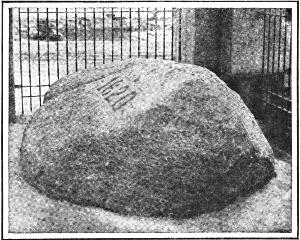
PLYMOUTH ROCK
The granite boulder on which the Pilgrims are said to have landed in 1620.
The Speedwell, however, soon sprang a leak, and the two vessels entered the harbor of Plymouth in Devonshire, where as many as possible of the Speedwell’s passengers were transferred to the Mayflower, those who could not be there accommodated being placed ashore. As the Mayflower glided out of the harbor on September 6, 1620, the one hundred and two devoted souls on board waved a sad farewell to their twenty disconsolate fellow Pilgrims who stood on the quay. As the dim outlines of ancient Cornwall faded from their view, the hearts of flesh cried out, but the steady voice of the Spirit gave them courage; for to the Puritan, in spite of his faults, which were many and great, duty was always first, and the planting of the wilderness with the choicest seed, as he modestly called himself, was a solemn duty laid upon him by God.
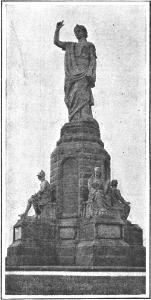
Copr. 1906. A. S. Burbank, Plymouth, Mass.
NATIONAL MONUMENT TO THE FOREFATHERS
Erected in remembrance of their sufferings for civil and religious liberty.
Driven from their course, lost on the vast oceans of an unknown world, the little company pressed bravely on, and on November 9 sighted Cape Cod, far to the north of their intended destination. Here their patent was useless, and as some of the company in “discontented and mutinous speeches” during the voyage had declared that “they would use their own liberty” after landing, it was thought wise to draw up a compact binding its signers to render “all due submission and obedience” to the government therein provided. This document has been called the first written constitution in the world’s history. It was not a constitution, however; but only a compact.
After five weeks of careful inspection of the coast they selected for their colony a spot which Captain John Smith had already named Plymouth, in honor of the lovely harbor from which they had sailed. Here, as tradition says, upon a great rock, now known throughout the world as Plymouth Rock, they landed on December 21, plowed through the deep snow, and amid the “murmuring pines and the hemlocks” began to build a House of God and about it rude cabins of logs. To this scene every true American heart should turn with reverence, whatever his creed, political affiliation, or sectional tradition; for it, more than any other in American colonial history, typifies the spirit which has made of America a great nation. At Plymouth, more even than at Jamestown, the political doctrines which had grown out of Calvinistic theology took firm root. In religion the Puritans were bigoted and intolerant; but in political theories they represented the idea of the freedom and dignity of the individual. The God-given right of self-government was their political motto, and from it they never swerved. The great contest which we call the American Revolution was not, as is sometimes asserted, an attempt to throw off the shackles of tyranny, but was, on the contrary, a determined refusal to allow these shackles to be put on. George the Third and his obsequious minister, Lord North, were the real revolutionists; for they sought to take away from the American colonies rights of self-government as old as Jamestown and Plymouth. In this they failed, and their failure cost England an empire.
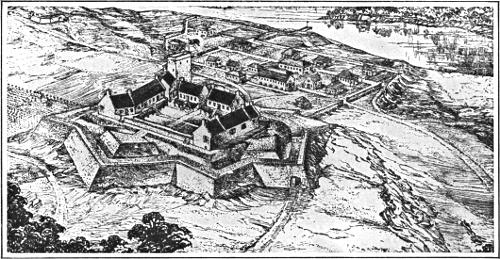
PLAN OF FORT TICONDEROGA
A restoration begun in 1909. The first fort, called Fort Carillon, was built by the French in 1755. It was taken by the British in 1758 and rebuilt as Fort Ticonderoga.
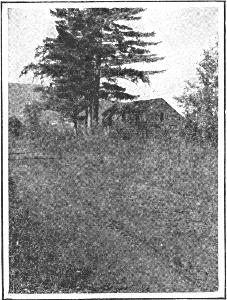
THE ETHAN ALLEN HOUSE
An inn at Dorset, Vermont, where the Revolutionary hero used to stop.
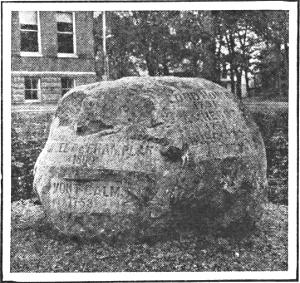
TABLET AT TICONDEROGA
On this rock are the names of Ticonderoga’s heroes, Champlain, Montcalm, Lord Howe, Amherst and Burgoyne.
To tax a man without his consent has always been, since Magna Charta was written, contrary to the liberties of native-born Englishmen. It was therefore contrary also to the liberties of native-born Americans, and as such it was resisted by our ancestors of the revolutionary epoch, as it had been resisted by our ancestors of the colonial era. When, on May 10, 1775, Ethan Allen and Benedict Arnold, sword in hand, called upon the king’s ancient fortress of Ticonderoga to surrender, giving as their authority “the great Jehovah and the Continental Congress,” they were but putting into striking phrase the political doctrines of Calvinism and seeking to enforce the royal promise that Americans of whatever colony were entitled to “all Liberties, Franchises, and Immunities … as if they had been abiding and born, within this, our Realm of England.” And when the great political figures of the Revolution—Adams, Witherspoon, Franklin, Jefferson, and the rest—assembled in Independence Hall, Philadelphia, and signed the Declaration of Independence, while the Liberty Bell pealed forth the notes of freedom, they were but repeating the declaration of the first American charter.
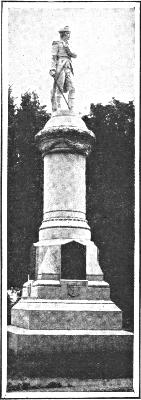
ETHAN ALLEN MONUMENT
Erected at Manchester, Vt., to the daring frontiersman who captured Fort Ticonderoga from the British.
Our Revolution was thus a war calmly entered upon to maintain immemorial rights and ancient institutions, whose preservation meant liberty not alone for America, but for England as well. Today we can clearly see what was at stake at Ticonderoga, at Bunker Hill, and upon the long chain of Revolutionary battlefields, stretching from the lakes to the faraway swamps of Georgia. Representative government hung in the balance, and whenever we hear of a nation’s rising against despotism and demanding that the people shall rule, we should add one more blossom to the garland which we are weaving for the graves of the men who gave Liberty to enlighten the world. Tennyson, with the soul of a true poet, though writing for Englishmen, has expressed the thought for all men:
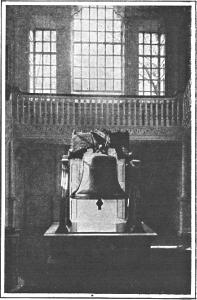
LIBERTY BELL
In Independence Hall, Philadelphia.
Years passed by. The ideas which had triumphed in the Revolution grew ever stronger in the nation that war had created. By slow degrees men came to understand more fully what it meant for the people to rule.
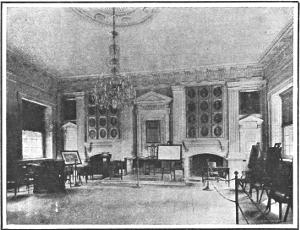
ROOM IN INDEPENDENCE HALL
The room where the Declaration of Independence was adopted July 4, 1776. Much of the original furniture is preserved here, and the portraits of those who signed the Declaration hang about the walls.
The colonies grew to populous cities, and the far off plains of Texas became the field for pioneer activity: Austin, Houston, and a host of others, with their love of “God’s out of doors,” left settled parts of America and sought homes upon the spreading prairies of that distant province of Mexico. With these men ideals of American freedom had become instinctive, and from the very first a trial of strength was inevitable between them and Santa Anna, the despotic ruler of Mexico.
The Alamo was a Franciscan mission, dating from the eighteenth century. It was strongly built, and inclosed an area of about three acres, upon which stood a roofless church and a few other crumbling buildings. Its garrison consisted of 186 men, under Colonel Travis, and included the famous frontiersmen, James Bowie and David Crockett. Sam Houston, commander of the Texas forces, had ordered that the Alamo be blown up and abandoned; but his orders had been disregarded, and the gallant little garrison was now to pay the terrible price of its disobedience.

Copr. Archer’s Studios
PROPOSED ALAMO HEROES’ MONUMENT
The tower will be 802 feet high, the loftiest in America, and will cost 2,000,000 dollars.
On February 23, 1836, the Alamo was invested by four thousand Mexican soldiers and the final reckoning began. On March 6, after a gallant defense, it was taken by storm, its garrison having been slaughtered to a man. “Thermopylæ had its messenger of defeat—the Alamo had none,” so runs the epitaph which stands upon the monument of these heroes of liberty.
But the blood-avenger was at hand. A few weeks later Sam Houston, standing with bared head before his little army of Texas patriots, gathered at San Jacinto, gave the watchword, “Remember the Alamo!” and within twenty minutes the army of Santa Anna was scattered “like the chaff which the wind driveth away.” Texas was free.
But I have mentioned one other battlefield, and one which in numbers and in the military skill of those engaged, as well as in the principles at stake, stands among the great battles of the world. Gettysburg is a name which is justly mentioned with pride by Americans of all sections; for when its aged veterans, North and South, can clasp hands and declare themselves brothers, it would be presumptuous for others to display the rancor of partizanship.
The settings of the battle were dramatic. Robert E. Lee, the ablest commander of the Confederacy, had crossed into Pennsylvania with his main column. The Federal army of the Potomac was close behind, intent upon pressing northward after Lee to protect Baltimore should it be endangered. Gettysburg lies in a fruitful valley of Pennsylvania, just north of the Maryland borderline. It is walled in by low mountain ranges studded with peaks—Culp’s Hill, Round Top, and Little Round Top—whose names rouse thrilling memories. Here on July 1, 2, and 3, 1863, the two armies fought the most fearful and significant open battle of the whole Civil War.
For the first two days fate favored the Confederate army, and “these partial successes,” writes General Lee, “determined me to continue the assault next day.” A movement was planned in which Pickett’s division of Longstreet’s corps was to strike the Federal line in the center, while Stuart with his cavalry attacked it in the rear. It was a desperate venture, and Longstreet declared that when the moment came for ordering Pickett and his gallant five thousand to advance, his lips refused to form the words, and to the calm inquiry, “General, shall I advance?” he could only reply by an affirmative bow. Within thirty minutes two thousand of the detachment had fallen, and of the officers who had headed this desperate venture, only Pickett and one lieutenant came out unharmed.
Stuart had failed to reach the Federal rear in time to aid the attack which, unsustained, had ended in disaster. “It was all my fault,” generously commented Lee, when the whole tragic result was understood, “Let us do the best we can toward saving that which is left us.” Meade made no attempt at pursuit. Lee led his army back to Virginia and was safe.
In an order of July 4, Meade had used the expression, “driving the invader from our soil,” which, when the great, sad-eyed Lincoln read, he heaved a deep sigh and remarked, “Will our generals never get that idea out of their heads? The whole country is our soil.”
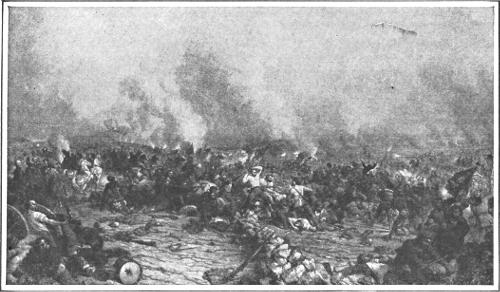
THE BATTLE OF GETTYSBURG
This struggle, the crisis of our Civil War and one of the great battles of the world, raged for three days.
SUPPLEMENTARY READING—John Fiske’s “Old Virginia and Her Neighbors,” “Beginnings of New England,” “The Critical Period of American History,” and “The American Revolution”; “True Relation of Virginia,” Smith; “Plymouth Plantation,” Bradford; “Sam Houston,” Bruce; “Stuart’s Cavalry in the Gettysburg Campaign,” John S. Mosby.
THE MENTOR
ISSUED SEMI-MONTHLY BY
The Mentor Association, Inc.
381 Fourth Ave., New York, N. Y.
Volume 1 Number 32
Serial Number 32
ANNUAL SUBSCRIPTION, FOUR DOLLARS. SINGLE COPIES TWENTY CENTS. FOREIGN POSTAGE, 75 CENTS EXTRA. CANADIAN POSTAGE, 50 CENTS EXTRA. ENTERED AT THE POST OFFICE AT NEW YORK, N. Y., AS SECOND-CLASS MATTER. COPYRIGHT, 1913, BY THE MENTOR ASSOCIATION, INC., PRESIDENT AND TREASURER, R. M. DONALDSON; VICE-PRESIDENT, W. M. SANFORD; SECRETARY, L. D. GARDNER.
The Mentor Association is less than a year old. The Mentor plan is a few months older than that. But the idea of which The Mentor Association is the outgrowth is one of the oldest in the world. It is as old as Curiosity—and just as human. The “Wonder Why” of Curiosity is always linked with the “Want to Know.” The two lead on to Knowledge. What has always been wanted and what is wanted now is a quick, easy and agreeable way of getting Knowledge. That is what The Mentor Association gives.
The plan of The Mentor Association fills so definitely a real want, that every one ought to know about it. All members of the Association and all others who see The Mentor will want to know not only what we have done and are doing, but what we shall do for months in the future. In a broad, popular, educational plan of this kind there should be the fullest confidence. The importance of this grows week by week, for The Mentor idea has drawn the interest of many thousands, and the membership increases day by day.
Though these lines are headed “editorial,” we feel a good deal of hesitancy in using the word. It gives the impression that The Mentor is simply a magazine, while actually it is much more than that. It is an important part of a broad educational plan, which includes an Inquiry Department, Suggested Courses of Reading, and other advantages.
It is not easy to find the exact word for a plan of this sort. Some day a brief phrase will come to us—no doubt some member of the Association will supply it—that will tell fully and adequately all that The Mentor Association stands for. We have described it many times. We cover the plan fairly well when we say in our prospectus that “the purpose of The Mentor Association is to make it easy to learn the things we want to know and ought to know,” but in that we say nothing of the beautiful pictures, which are a most important feature. There is a value in the stimulating phrase that we use, “Learn one thing every day,” but there is no hint in that of the delight afforded by the exquisite illustrations furnished in The Mentor. In the service of The Mentor Association Information and Art go hand in hand.
The quick recognition of the value of The Mentor plan during the eight months of its existence is naturally gratifying, but what is most interesting is the wide reach of its appeal. We have hundreds of letters coming to us from all sources, and the message is much the same, whether it be a lawyer, a college professor, a teacher, a clubwoman, an engineer or a doctor. The burden of all these messages can be summed up in three phrases: First, “The idea is fine”; second, “You have carried it out admirably”; and third, “It fills a real want.”
We have referred to our prospectus. This is a booklet in which the plans and purposes of The Mentor Association are fully described, and the schedule of the year is given. It also tells something of what we have in preparation for 1914. Send for copies of this prospectus. If you are a member of The Mentor Association you will, of course, want it, and you should have some extra copies to give to your friends. You will be doing them a service.

JAMESTOWN TOWER
ONE
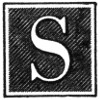
Slowly up the river three vessels made their way with the light though favoring breeze. Gradually the open of the bay was passed, as, two days previously, the open of the sea had been left behind. Now the land was closing in on each side, and both ships were alive with the figures of those who stood eagerly scanning the shore. And what they saw was a welcome sight. The April sun was shining on the forests of both banks; elms, they saw, like old friends, stretching out their branches in friendly protection; oaks, too, knotted and gnarled, seemed to voice a welcome. On nearer approach they noticed masses of dogwood in brilliant bloom, and other shrubs in flower, whose fragrance was wafted over to them as a pleasant incense. And there was a riot of sweet birds’ songs coming out of the woods.
Truly, it was a paradise that they had come to, and many fell on their knees in thanksgiving that they had safely crossed the seas and been guided to a land of such beauty. Till night they sailed on up the river, and then the sails were furled, the anchor dropped, and their long journey was at an end.
Thus came the colonists who, a few weeks later, founded Jamestown in Virginia, the first English settlement in America, which they named after King James I. Starting in three small vessels, one of them but twenty tons in burden, they had taken more than four months in crossing.
At first they had only tents to live in. It was late to plant, and food was not plentiful. And they soon learned that terror and death lurked in the land. Indians had stolen up, and with bows and arrows wounded seventeen of the men and killed a boy. The thunder of muskets drove them away; but the settlers felt it necessary to keep regular watch, and each man sat up every third night to take his turn. Those first few months were hard, and many died. Then they built cabins, and enjoyed more comfort.
Captain Smith, later a governor, was absent much of the time, buying food from the Indians. Two years afterward he went home, and the months that followed were called the “Starving Time,” when all but sixty of the four hundred settlers died.
Yet, through many tribulations, Jamestown lived. In 1608 it was burned, and other cabins were built. In 1619 word was received that a representative government had been granted. The settlers were each to have a portion of ground, and plantations were gradually laid out along the James. In spite of Indian massacres the colony and all Virginia grew.
In 1676 Jamestown was burned by Nathaniel Bacon, who had risen against the autocratic rule of the governor. In 1691 the capital of Virginia was removed from Jamestown to Williamsburg, and the importance of the old colony ceased, until it is now but a site of ruins.
It was on low and marshy ground that later became an island. There are monuments erected in commemoration of the colony, of Captain Smith and Pocahontas, and a church that resembles the one first built.
The Jamestown Exposition in 1907 was held near Norfolk, forty miles down the river.
PREPARED BY THE EDITORIAL STAFF OF THE MENTOR ASSOCIATION
ILLUSTRATION FOR THE MENTOR, VOL. 1, No. 32, SERIAL No. 32
COPYRIGHT, 1913, BY THE MENTOR ASSOCIATION, INC.

PLYMOUTH ROCK
TWO
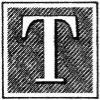
The little ship hove to and the sails were furled upon the yards. The long journey was over. There, on the harbor’s edge, rose the hill that was to become so familiar in after years to those who had spent these many weeks at sea. There too, below the hill and on the very shore, projected the great boulder of granite upon which they were to make their landing, which would ever afterward be famous. Here, at last, was freedom in a new land, freedom to think and worship as they pleased! And the voyagers were jubilant.
It was cold, for Christmas was only four days off; but the spirits of the Pilgrims were not dampened. The armed men went ashore to reconnoiter, and soon returned with the word that it was a likely spot. Then for many days there was a sound of axes clearing the land and felling trees to build houses with; the smoke of many fires brought with it the odor of burning pine. But the buoyant spirits of the colonists could not long withstand the penetrating cold. Food was poor and scarce, and none was to be had from the surrounding country. Sickness came, and death broke into the ranks. Indeed, before the close of that first winter nearly half of the colonists had perished. They were buried upon the hill near the harbor, and in the spring grain was sowed over their graves that the Indians might not see how terribly the little company had suffered.
Friendly Indians showed them how to plant their corn, putting fish into the hills to fertilize it. Other colonists came; other colonies were established—and so New England was born.
The story of gruff, big-hearted Myles Standish, the military captain of Plymouth, and Priscilla Mullins, is inseparably connected with the colony. Captain Standish had many encounters with the Indians. A fort was built, and, while in general the Indians were friendly, the men of the little army under his command were constantly on the lookout for trouble that might arise. Once a conspiracy was detected, and the Indians put to death with the very weapons they had brought to use upon the people of the colony.
In 1624 each member of the colony received a parcel of land, which he was allowed to work for himself. After that there was always plenty of food in Plymouth. The colony was united with that of Massachusetts Bay in 1691.
Today Plymouth is a busy city of more than 12,000 people. The great boulder upon which the Pilgrims stepped is still there at the harbor edge, and a protecting canopy of granite has been built above it. The bones of some of the Pilgrims have been placed within the canopy.
PREPARED BY THE EDITORIAL STAFF OF THE MENTOR ASSOCIATION
ILLUSTRATION FOR THE MENTOR, VOL. 1, No. 32, SERIAL No. 32
COPYRIGHT, 1913, BY THE MENTOR ASSOCIATION, INC.

TICONDEROGA
THREE
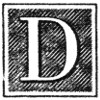
Darkness had fallen long before the men of Vermont came to the lakes. Through woods where giant trees reached upward and made the darkness impenetrable they had marched, stumbling along, feeling their way, often bumping into trees or falling over logs. Now at the lake shore they were ready to embark. Silently they moved to and fro, and the only sound was the lapping of the water against the shore and the roar of the falls. Just a few boats could be found; but they were filled and rowed across in silence, brought back, filled again, and again rowed across. When dawn broke in the east eighty-three American soldiers had been ferried over, and it was too late to wait for more.
If the attack was to be a success it must be made without more delay. With the utmost caution, therefore, the men moved forward and up the slope. The rumble of the falls helped them, drowning out all other sounds. They reached the sally port. There a sentry pointed his musket at the leader of the Americans and pulled the trigger. The piece did not go off, and the sentry fled. In a few moments the little army of invaders had formed a hollow square within the fort, facing the barracks about them, their muskets ready to fire. The Indian war-cry was given, and Ethan Allen, who led them, made his way to the quarters of the commandant, and demanded the surrender of the fort.
“In whose name,” asked the commandant.
“In the name of the Great Jehovah and the Continental Congress,” replied Allen. And the surrender was made. So easily and quietly did Ethan Allen and Benedict Arnold capture Ticonderoga from the British on that early morning in May, 1775, without the loss of a man or the firing of a gun, and the army of the colonies was enriched by many precious cannon, muskets, and a large amount of ammunition for the struggle for freedom that had but started.
“Sounding waters” is the interpretation given to the Indian name, Ticonderoga. Here, where the waters of Lake George descend tumultuously into Lake Champlain, falling thirty feet in one sheer drop, where the voyagers from Canada to New England had to leave their boats, and portage their loads, a fort had been built by the French twenty years before. Three years after it was put up, Ticonderoga was attacked by six thousand British regulars and ten thousand provincials. The four thousand men of the French garrison repulsed the attacking army, and among the killed was Lord Howe. His memory is kept fresh by a tablet in Westminster Abbey, erected by the people of Massachusetts. Three weeks after this repulse, when Montcalm had gone to Quebec to oppose General Wolfe and only four hundred men were left in the fort, Lord Amherst, with eleven thousand English, besieged it. Realizing the hopelessness of their task, the garrison blew up the fortifications and abandoned the place. It had been in English hands since that time up to its capture by the “Green Mountain Boys” under Ethan Allen. Two years later, when General Burgoyne descended from Canada, the fort was captured, while the Americans retreated after a feeble resistance. But when Burgoyne surrendered, after the battle of Saratoga, Ticonderoga again fell into American hands.
In 1909, on the three hundredth anniversary of the discovery of Lake Champlain, the owner of the ground on which the ruins of the fort stood began its restoration.
The waters still roar at the falls as they did on the night Ethan Allen and his Green Mountain Boys made the bloodless attack upon the fort.
PREPARED BY THE EDITORIAL STAFF OF THE MENTOR ASSOCIATION
ILLUSTRATION FOR THE MENTOR, VOL. 1, No. 32, SERIAL No. 32
COPYRIGHT, 1913, BY THE MENTOR ASSOCIATION, INC.

INDEPENDENCE HALL
FOUR

Of the sixty American gentlemen in frosted wigs and silk stockings, who sat in what is now Independence Hall in Philadelphia and composed the Continental Congress, there was none more aristocratic by birth, more democratic by nature, than Thomas Jefferson. Perhaps that was one reason why they selected him to pen the Declaration of Independence, adopted on July 4, 1776, which remains today America’s most sacred historical document. He was sufficiently modest, however, to insist that in writing the Declaration he simply put down the ideas prevalent at the time.
This Continental Congress was the first body of men at that time sitting in any of the parliaments of the world. These statesmen had the courage to break an old order, the valor to maintain a new one, and the wisdom to fortify it with laws and a constitution. The first and second Congress of our nation comprised the flower of the character of that age. As a whole body they ruled higher for talents, firmness, and good judgment than any national assembly known to history.
So when it came to a division between allegiance to England and a complete separation from the mother country, these men chose wisely, bravely, and confidently. It was a big step to take, and a dangerous one also. Hitherto the colonies had been merely fighting for “no taxation without representation”; but now they would be fighting for liberty. And, if conquered, the leaders could hope for no better fate than execution as traitors.
It is related that when Benjamin Franklin lifted his pen, after signing the Declaration of Independence, he turned to the assembly and said with a grim smile:
“Now, gentlemen, we must all hang together, or we shall hang separately.”
The Declaration of Independence was adopted on July 4, 1776; but not all the members of the Continental Congress signed it on that day. A great many signed at later dates.
The old bell that rang out this message of liberty is now kept as an almost sacred relic in Independence Hall. When the Pennsylvanians were building their State edifice they ordered a bell from England. But when it arrived they found that it had lost its voice and had to be recast. A quotation was inscribed on the new bell, which, though chosen a quarter of a century in advance of the Declaration of Independence, showed the direction in which the thoughts of all the people of America were even then turning—“Proclaim Liberty throughout the land unto all the inhabitants thereof.” This quotation was taken from the tenth verse of the twenty-fifth chapter of Leviticus.
The bell was afterward used on various occasions of national importance; but was cracked in 1835 in tolling for the funeral of Chief Justice Marshall, and since 1843 has never been sounded.
PREPARED BY THE EDITORIAL STAFF OF THE MENTOR ASSOCIATION
ILLUSTRATION FOR THE MENTOR, VOL. 1, No. 32, SERIAL No. 32
COPYRIGHT, 1913, BY THE MENTOR ASSOCIATION, INC.

THE ALAMO
FIVE

Two men who were riding up the heights dismounted, left their horses, and walked to the top. The scene before them was one that tried their souls,—a great circle of troops; here and there a battery of guns; in the center a low rambling building of adobe, at which the fire was directed.
“It’s no use, Bonham,” said the elder of the two. “We can’t do it. To try to get in now would be certain death. You have done your best to get assistance; you can do no more.”
“Smith,” replied the other, “I am going in. Travis sent me for help. It is right for you to turn back; but I cannot. I will report the results of my mission or die in the attempt.”
Putting a white handkerchief in his hat brim and fastening it there he mounted the splendid cream-colored horse. The two men clasped hands and looked into each other’s eyes for a moment, and then Bonham rode down toward the beleaguered fort. Smith saw him reach the Mexican lines and spur his horse on. He was apparently unnoticed for a time, and then the fire of hundreds was turned upon him. Bending low in the saddle, man and horse seemed to fly over the ground. Hundreds of bullets must have whizzed past him; but he seemed to have a charmed life. On and on he went, and the fire against him grew heavier. But now the men of the garrison had seen the white handkerchief, which had been agreed upon as a signal, and a cheer went up. The gates of the fort swung open. The horse went faster. Smith saw horse and rider reach the fort, and the gates swing to behind them. They had gone unscathed through the entire Mexican army.
The Alamo at San Antonio, originally built for a mission, had been taken by the Texans in their efforts to gain independence from Mexico. Garrisoned by a few men under Col. William Barrett Travis, it was surrounded on February 23, 1836, by an army variously estimated at from 3,000 to 8,000 men, under General Santa Anna.
With his force of 150 Texans, among them Colonel Bowie, David Crockett, frontiersman and ex-member of Congress, and James Butler Bonham, a friend from boyhood days of Colonel Travis, the last named made a gallant fight against overwhelming odds. Messengers had been despatched to summon help, and finally Travis sent his friend out to bring assistance. At the first place he tried, appeals were of no avail, and he rode on to Gonzales. There he found that Captain Martin and thirty-two men had gone to the assistance of the besieged men, fighting their way into the fort. So he returned.
Three days after Bonham’s ride the Mexican army made a general assault. All but six of the brave garrison were killed, and these, surrendering on condition of parole, were butchered in cold blood. The Mexicans lost 1,600 men. On April 21 the Mexican army overtook General Houston and his army of 780 men at San Jacinto. The battle cry of the Texans was “Remember the Alamo!” and the enraged men of the little army cut the Mexican forces to pieces, killing 630 and capturing nearly all the rest. Thus Texas won her independence.
PREPARED BY THE EDITORIAL STAFF OF THE MENTOR ASSOCIATION
ILLUSTRATION FOR THE MENTOR, VOL. 1, No. 32, SERIAL No. 32
COPYRIGHT, 1913, BY THE MENTOR ASSOCIATION, INC.

GETTYSBURG
SIX
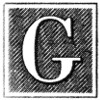
Gettysburg was the high-water mark of the Rebellion, and Pickett’s charge was the high-water mark of Gettysburg. In that terrific engagement of the third day the advance of the Confederates into northern territory was effectually checked, and the question of the Confederacy maintaining a position in northern territory was settled. Lee turned south with his defeated and broken forces, and as the booming of the guns of Gettysburg died down, the Confederate cause ebbed away.
When the battle started, more than two hundred cannon hurled shot and shell across a lovely green valley with yellowing grain fields. The carnage and the roar and smoke of guns continued until the Confederate gunners began to run short of ammunition; then, on the third day, came a lull. It was an ominous silence. Down from the one hill surged a line of gray, and another, and another. The Confederate forces charged on across the valley, and still the Federal batteries reserved their fire. The supreme moment was at hand. North and South hung upon the issue with drawn breath. Then as the gray army mounted the opposite hill, rifles and cannon thundered again, line after line broke and fell; but still the charging body of the Confederates kept on. They captured the first Federal outworks, and staggered on toward the second. But the Union fire had been too deadly. No human bravery could withstand such losses. The gray lines fell back, leaving most of their men dead on the field. Thus with the third day of the Battle of Gettysburg over, the climax of the war was past.
The little town round which the battle raged was settled about 1740, and in 1800 it became the county seat. It holds the oldest Lutheran college in America, and likewise the oldest Lutheran theological seminary. Today the valley is a beautiful national park, with the lines of battle marked by six hundred monuments, five hundred iron tablets, one thousand markers, and hundreds of cannon. Observation towers enable the visitor to see the surrounding country.
It is a curious fact that neither side had intended to fight at Gettysburg, General Meade having determined to make a stand at Pipes Creek, fifteen miles distant. But Lee’s troops, coming into contact with a body of Union cavalry near Gettysburg, July 1, 1863, precipitated the battle, and both armies hurried to the scene. The Federal troops were forced back, retreating through the village, and took position on Cemetery Hill, just beyond. At one time in his march toward Gettysburg, General Lee was within a few miles of the main ammunition stores of the Federal army, which, had he known it, he could easily have captured.
Both sides suffered tremendous losses. Of an army of 75,000 Lee lost 43,000 killed, wounded, and captured, and Meade 23,000 in killed and wounded out of 90,000. In Pickett’s charge, out of fifteen regimental commanders, ten were killed and five wounded. One regiment lost 90 per cent. of its members; of 4,500 officers and men 3,393 were left on the field.
PREPARED BY THE EDITORIAL STAFF OF THE MENTOR ASSOCIATION
ILLUSTRATION FOR THE MENTOR, VOL. 1, No. 32, SERIAL No. 32
COPYRIGHT, 1913, BY THE MENTOR ASSOCIATION, INC.
End of the Project Gutenberg EBook of The Mentor: Historic Spots of America,
Vol. 1, Num. 32, Serial No. 32, by Robert McNutt McElroy
*** END OF THIS PROJECT GUTENBERG EBOOK MENTOR: HISTORIC SPOTS OF AMERICA ***
***** This file should be named 49905-h.htm or 49905-h.zip *****
This and all associated files of various formats will be found in:
http://www.gutenberg.org/4/9/9/0/49905/
Produced by Juliet Sutherland and the Online Distributed
Proofreading Team at http://www.pgdp.net
Updated editions will replace the previous one--the old editions will
be renamed.
Creating the works from print editions not protected by U.S. copyright
law means that no one owns a United States copyright in these works,
so the Foundation (and you!) can copy and distribute it in the United
States without permission and without paying copyright
royalties. Special rules, set forth in the General Terms of Use part
of this license, apply to copying and distributing Project
Gutenberg-tm electronic works to protect the PROJECT GUTENBERG-tm
concept and trademark. Project Gutenberg is a registered trademark,
and may not be used if you charge for the eBooks, unless you receive
specific permission. If you do not charge anything for copies of this
eBook, complying with the rules is very easy. You may use this eBook
for nearly any purpose such as creation of derivative works, reports,
performances and research. They may be modified and printed and given
away--you may do practically ANYTHING in the United States with eBooks
not protected by U.S. copyright law. Redistribution is subject to the
trademark license, especially commercial redistribution.
START: FULL LICENSE
THE FULL PROJECT GUTENBERG LICENSE
PLEASE READ THIS BEFORE YOU DISTRIBUTE OR USE THIS WORK
To protect the Project Gutenberg-tm mission of promoting the free
distribution of electronic works, by using or distributing this work
(or any other work associated in any way with the phrase "Project
Gutenberg"), you agree to comply with all the terms of the Full
Project Gutenberg-tm License available with this file or online at
www.gutenberg.org/license.
Section 1. General Terms of Use and Redistributing Project
Gutenberg-tm electronic works
1.A. By reading or using any part of this Project Gutenberg-tm
electronic work, you indicate that you have read, understand, agree to
and accept all the terms of this license and intellectual property
(trademark/copyright) agreement. If you do not agree to abide by all
the terms of this agreement, you must cease using and return or
destroy all copies of Project Gutenberg-tm electronic works in your
possession. If you paid a fee for obtaining a copy of or access to a
Project Gutenberg-tm electronic work and you do not agree to be bound
by the terms of this agreement, you may obtain a refund from the
person or entity to whom you paid the fee as set forth in paragraph
1.E.8.
1.B. "Project Gutenberg" is a registered trademark. It may only be
used on or associated in any way with an electronic work by people who
agree to be bound by the terms of this agreement. There are a few
things that you can do with most Project Gutenberg-tm electronic works
even without complying with the full terms of this agreement. See
paragraph 1.C below. There are a lot of things you can do with Project
Gutenberg-tm electronic works if you follow the terms of this
agreement and help preserve free future access to Project Gutenberg-tm
electronic works. See paragraph 1.E below.
1.C. The Project Gutenberg Literary Archive Foundation ("the
Foundation" or PGLAF), owns a compilation copyright in the collection
of Project Gutenberg-tm electronic works. Nearly all the individual
works in the collection are in the public domain in the United
States. If an individual work is unprotected by copyright law in the
United States and you are located in the United States, we do not
claim a right to prevent you from copying, distributing, performing,
displaying or creating derivative works based on the work as long as
all references to Project Gutenberg are removed. Of course, we hope
that you will support the Project Gutenberg-tm mission of promoting
free access to electronic works by freely sharing Project Gutenberg-tm
works in compliance with the terms of this agreement for keeping the
Project Gutenberg-tm name associated with the work. You can easily
comply with the terms of this agreement by keeping this work in the
same format with its attached full Project Gutenberg-tm License when
you share it without charge with others.
1.D. The copyright laws of the place where you are located also govern
what you can do with this work. Copyright laws in most countries are
in a constant state of change. If you are outside the United States,
check the laws of your country in addition to the terms of this
agreement before downloading, copying, displaying, performing,
distributing or creating derivative works based on this work or any
other Project Gutenberg-tm work. The Foundation makes no
representations concerning the copyright status of any work in any
country outside the United States.
1.E. Unless you have removed all references to Project Gutenberg:
1.E.1. The following sentence, with active links to, or other
immediate access to, the full Project Gutenberg-tm License must appear
prominently whenever any copy of a Project Gutenberg-tm work (any work
on which the phrase "Project Gutenberg" appears, or with which the
phrase "Project Gutenberg" is associated) is accessed, displayed,
performed, viewed, copied or distributed:
This eBook is for the use of anyone anywhere in the United States and
most other parts of the world at no cost and with almost no
restrictions whatsoever. You may copy it, give it away or re-use it
under the terms of the Project Gutenberg License included with this
eBook or online at www.gutenberg.org. If you are not located in the
United States, you'll have to check the laws of the country where you
are located before using this ebook.
1.E.2. If an individual Project Gutenberg-tm electronic work is
derived from texts not protected by U.S. copyright law (does not
contain a notice indicating that it is posted with permission of the
copyright holder), the work can be copied and distributed to anyone in
the United States without paying any fees or charges. If you are
redistributing or providing access to a work with the phrase "Project
Gutenberg" associated with or appearing on the work, you must comply
either with the requirements of paragraphs 1.E.1 through 1.E.7 or
obtain permission for the use of the work and the Project Gutenberg-tm
trademark as set forth in paragraphs 1.E.8 or 1.E.9.
1.E.3. If an individual Project Gutenberg-tm electronic work is posted
with the permission of the copyright holder, your use and distribution
must comply with both paragraphs 1.E.1 through 1.E.7 and any
additional terms imposed by the copyright holder. Additional terms
will be linked to the Project Gutenberg-tm License for all works
posted with the permission of the copyright holder found at the
beginning of this work.
1.E.4. Do not unlink or detach or remove the full Project Gutenberg-tm
License terms from this work, or any files containing a part of this
work or any other work associated with Project Gutenberg-tm.
1.E.5. Do not copy, display, perform, distribute or redistribute this
electronic work, or any part of this electronic work, without
prominently displaying the sentence set forth in paragraph 1.E.1 with
active links or immediate access to the full terms of the Project
Gutenberg-tm License.
1.E.6. You may convert to and distribute this work in any binary,
compressed, marked up, nonproprietary or proprietary form, including
any word processing or hypertext form. However, if you provide access
to or distribute copies of a Project Gutenberg-tm work in a format
other than "Plain Vanilla ASCII" or other format used in the official
version posted on the official Project Gutenberg-tm web site
(www.gutenberg.org), you must, at no additional cost, fee or expense
to the user, provide a copy, a means of exporting a copy, or a means
of obtaining a copy upon request, of the work in its original "Plain
Vanilla ASCII" or other form. Any alternate format must include the
full Project Gutenberg-tm License as specified in paragraph 1.E.1.
1.E.7. Do not charge a fee for access to, viewing, displaying,
performing, copying or distributing any Project Gutenberg-tm works
unless you comply with paragraph 1.E.8 or 1.E.9.
1.E.8. You may charge a reasonable fee for copies of or providing
access to or distributing Project Gutenberg-tm electronic works
provided that
* You pay a royalty fee of 20% of the gross profits you derive from
the use of Project Gutenberg-tm works calculated using the method
you already use to calculate your applicable taxes. The fee is owed
to the owner of the Project Gutenberg-tm trademark, but he has
agreed to donate royalties under this paragraph to the Project
Gutenberg Literary Archive Foundation. Royalty payments must be paid
within 60 days following each date on which you prepare (or are
legally required to prepare) your periodic tax returns. Royalty
payments should be clearly marked as such and sent to the Project
Gutenberg Literary Archive Foundation at the address specified in
Section 4, "Information about donations to the Project Gutenberg
Literary Archive Foundation."
* You provide a full refund of any money paid by a user who notifies
you in writing (or by e-mail) within 30 days of receipt that s/he
does not agree to the terms of the full Project Gutenberg-tm
License. You must require such a user to return or destroy all
copies of the works possessed in a physical medium and discontinue
all use of and all access to other copies of Project Gutenberg-tm
works.
* You provide, in accordance with paragraph 1.F.3, a full refund of
any money paid for a work or a replacement copy, if a defect in the
electronic work is discovered and reported to you within 90 days of
receipt of the work.
* You comply with all other terms of this agreement for free
distribution of Project Gutenberg-tm works.
1.E.9. If you wish to charge a fee or distribute a Project
Gutenberg-tm electronic work or group of works on different terms than
are set forth in this agreement, you must obtain permission in writing
from both the Project Gutenberg Literary Archive Foundation and The
Project Gutenberg Trademark LLC, the owner of the Project Gutenberg-tm
trademark. Contact the Foundation as set forth in Section 3 below.
1.F.
1.F.1. Project Gutenberg volunteers and employees expend considerable
effort to identify, do copyright research on, transcribe and proofread
works not protected by U.S. copyright law in creating the Project
Gutenberg-tm collection. Despite these efforts, Project Gutenberg-tm
electronic works, and the medium on which they may be stored, may
contain "Defects," such as, but not limited to, incomplete, inaccurate
or corrupt data, transcription errors, a copyright or other
intellectual property infringement, a defective or damaged disk or
other medium, a computer virus, or computer codes that damage or
cannot be read by your equipment.
1.F.2. LIMITED WARRANTY, DISCLAIMER OF DAMAGES - Except for the "Right
of Replacement or Refund" described in paragraph 1.F.3, the Project
Gutenberg Literary Archive Foundation, the owner of the Project
Gutenberg-tm trademark, and any other party distributing a Project
Gutenberg-tm electronic work under this agreement, disclaim all
liability to you for damages, costs and expenses, including legal
fees. YOU AGREE THAT YOU HAVE NO REMEDIES FOR NEGLIGENCE, STRICT
LIABILITY, BREACH OF WARRANTY OR BREACH OF CONTRACT EXCEPT THOSE
PROVIDED IN PARAGRAPH 1.F.3. YOU AGREE THAT THE FOUNDATION, THE
TRADEMARK OWNER, AND ANY DISTRIBUTOR UNDER THIS AGREEMENT WILL NOT BE
LIABLE TO YOU FOR ACTUAL, DIRECT, INDIRECT, CONSEQUENTIAL, PUNITIVE OR
INCIDENTAL DAMAGES EVEN IF YOU GIVE NOTICE OF THE POSSIBILITY OF SUCH
DAMAGE.
1.F.3. LIMITED RIGHT OF REPLACEMENT OR REFUND - If you discover a
defect in this electronic work within 90 days of receiving it, you can
receive a refund of the money (if any) you paid for it by sending a
written explanation to the person you received the work from. If you
received the work on a physical medium, you must return the medium
with your written explanation. The person or entity that provided you
with the defective work may elect to provide a replacement copy in
lieu of a refund. If you received the work electronically, the person
or entity providing it to you may choose to give you a second
opportunity to receive the work electronically in lieu of a refund. If
the second copy is also defective, you may demand a refund in writing
without further opportunities to fix the problem.
1.F.4. Except for the limited right of replacement or refund set forth
in paragraph 1.F.3, this work is provided to you 'AS-IS', WITH NO
OTHER WARRANTIES OF ANY KIND, EXPRESS OR IMPLIED, INCLUDING BUT NOT
LIMITED TO WARRANTIES OF MERCHANTABILITY OR FITNESS FOR ANY PURPOSE.
1.F.5. Some states do not allow disclaimers of certain implied
warranties or the exclusion or limitation of certain types of
damages. If any disclaimer or limitation set forth in this agreement
violates the law of the state applicable to this agreement, the
agreement shall be interpreted to make the maximum disclaimer or
limitation permitted by the applicable state law. The invalidity or
unenforceability of any provision of this agreement shall not void the
remaining provisions.
1.F.6. INDEMNITY - You agree to indemnify and hold the Foundation, the
trademark owner, any agent or employee of the Foundation, anyone
providing copies of Project Gutenberg-tm electronic works in
accordance with this agreement, and any volunteers associated with the
production, promotion and distribution of Project Gutenberg-tm
electronic works, harmless from all liability, costs and expenses,
including legal fees, that arise directly or indirectly from any of
the following which you do or cause to occur: (a) distribution of this
or any Project Gutenberg-tm work, (b) alteration, modification, or
additions or deletions to any Project Gutenberg-tm work, and (c) any
Defect you cause.
Section 2. Information about the Mission of Project Gutenberg-tm
Project Gutenberg-tm is synonymous with the free distribution of
electronic works in formats readable by the widest variety of
computers including obsolete, old, middle-aged and new computers. It
exists because of the efforts of hundreds of volunteers and donations
from people in all walks of life.
Volunteers and financial support to provide volunteers with the
assistance they need are critical to reaching Project Gutenberg-tm's
goals and ensuring that the Project Gutenberg-tm collection will
remain freely available for generations to come. In 2001, the Project
Gutenberg Literary Archive Foundation was created to provide a secure
and permanent future for Project Gutenberg-tm and future
generations. To learn more about the Project Gutenberg Literary
Archive Foundation and how your efforts and donations can help, see
Sections 3 and 4 and the Foundation information page at
www.gutenberg.org
Section 3. Information about the Project Gutenberg Literary Archive Foundation
The Project Gutenberg Literary Archive Foundation is a non profit
501(c)(3) educational corporation organized under the laws of the
state of Mississippi and granted tax exempt status by the Internal
Revenue Service. The Foundation's EIN or federal tax identification
number is 64-6221541. Contributions to the Project Gutenberg Literary
Archive Foundation are tax deductible to the full extent permitted by
U.S. federal laws and your state's laws.
The Foundation's principal office is in Fairbanks, Alaska, with the
mailing address: PO Box 750175, Fairbanks, AK 99775, but its
volunteers and employees are scattered throughout numerous
locations. Its business office is located at 809 North 1500 West, Salt
Lake City, UT 84116, (801) 596-1887. Email contact links and up to
date contact information can be found at the Foundation's web site and
official page at www.gutenberg.org/contact
For additional contact information:
Dr. Gregory B. Newby
Chief Executive and Director
gbnewby@pglaf.org
Section 4. Information about Donations to the Project Gutenberg
Literary Archive Foundation
Project Gutenberg-tm depends upon and cannot survive without wide
spread public support and donations to carry out its mission of
increasing the number of public domain and licensed works that can be
freely distributed in machine readable form accessible by the widest
array of equipment including outdated equipment. Many small donations
($1 to $5,000) are particularly important to maintaining tax exempt
status with the IRS.
The Foundation is committed to complying with the laws regulating
charities and charitable donations in all 50 states of the United
States. Compliance requirements are not uniform and it takes a
considerable effort, much paperwork and many fees to meet and keep up
with these requirements. We do not solicit donations in locations
where we have not received written confirmation of compliance. To SEND
DONATIONS or determine the status of compliance for any particular
state visit www.gutenberg.org/donate
While we cannot and do not solicit contributions from states where we
have not met the solicitation requirements, we know of no prohibition
against accepting unsolicited donations from donors in such states who
approach us with offers to donate.
International donations are gratefully accepted, but we cannot make
any statements concerning tax treatment of donations received from
outside the United States. U.S. laws alone swamp our small staff.
Please check the Project Gutenberg Web pages for current donation
methods and addresses. Donations are accepted in a number of other
ways including checks, online payments and credit card donations. To
donate, please visit: www.gutenberg.org/donate
Section 5. General Information About Project Gutenberg-tm electronic works.
Professor Michael S. Hart was the originator of the Project
Gutenberg-tm concept of a library of electronic works that could be
freely shared with anyone. For forty years, he produced and
distributed Project Gutenberg-tm eBooks with only a loose network of
volunteer support.
Project Gutenberg-tm eBooks are often created from several printed
editions, all of which are confirmed as not protected by copyright in
the U.S. unless a copyright notice is included. Thus, we do not
necessarily keep eBooks in compliance with any particular paper
edition.
Most people start at our Web site which has the main PG search
facility: www.gutenberg.org
This Web site includes information about Project Gutenberg-tm,
including how to make donations to the Project Gutenberg Literary
Archive Foundation, how to help produce our new eBooks, and how to
subscribe to our email newsletter to hear about new eBooks.